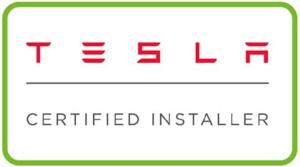You’ll find that every profession has its share of confusing abbreviations, acronyms and technical jargon, and it’s no different in the electrical industry. So, unless you’re a qualified or you work in the electrical sector or are studying to become an electrician the jargon used might seem confusing. In this blog we have put together a handy jargon buster, which we hope demystifies some of the most common electrical phrases used. However, this list is by no means an comprehensive!
AC
AC (alternating current) is a type of electrical current. Electricity is created when electrons move through a conductor, when these electrons constantly move in alternating directions it is referred to as an alternating current.
Amp (A)
Short for ampere is the base unit of electric current.
Ammeter (from Ampere Meter)
This is an instrument for measuring the current in a circuit in amperes. Ammeters are always connected in series with the circuit to be tested.
Arc Flash
An arc flash, also known as flashover, is the light and heat produced as part of an arc fault, a type of electrical explosion or discharge that results from a low-impedance connection through air to ground, another voltage phase in an electrical system, between 2 contacts opening or a loose connection Arc flash temperatures can reach or exceed 35,000 °F.
BS7671
This is the British Standard (7671) requirements for electrical installations, (The IET Wiring Regulations) also known as the 18th edition. This document details the British Standard that all electrical installation work must adhere to in the UK.
Capping
The thin metal or plastic channel sometimes used to contain cables when fixed to a wall prior to plastering. Capping is used to make it easy to run several cables following the same route with the minimum use of fixings.
Chasing
Chasing, known as Raggles in Scotland, is the term used when cutting a slot or groove to install cables into a solid wall. Can be achieved by using a chase cutting tool, an angle grinder or hammer and chisel.
Circuit
For an electrical device to work effectively it needs electricity to flow through it. The pathway (circuit needs to be continuous for this to happen.
Circuit breaker
An automatic safety switch which will turn off the electrical supply when there is a fault. Capable of making, carrying and breaking normal load currents and also making and automatically breaking, under predetermined conditions, abnormal currents such as short-circuits.
Conductor
This is a material that has a low resistance and allows electricity to flow easily in it.
Conduit
A plastic or metal tube used to enclose, protect and route cables. Normal sizes are 20mm and 25mm.
Consumer Unit (CU)
Also known as a fusebox, a CU is the point from which electricity is distributed around the home. It contains a variety of circuit breakers or fuses, a main switch and may also have one or more Residual Current Devices (RCDs).
Current
Is the flow of electrons through a circuit.
DC
DC (direct current) is when electrons are all moving through the conductor in the same direction, eg a battery.
Distribution board
This is similar to a consumer unit. An enclosure (box) containing switching or protective devices associated with one or more outgoing circuits, together with terminals for the neutral and circuit protective conductors.
Double Pole Switch
It’s like two separate single-pole switches that are linked together so they work together as 1 switch eg the main switch on a Consumer Unit which turns off the Line and Neutral at the same time.
Earthing
Earthing minimises the risk of receiving an electric shock should you accidentally touch metal parts when a fault has occurred. It provides a path for the faulty current to flow safely to earth, which causes the protective device (CB, fuses) to disconnect the circuit and stop the danger of it passing through you.
Earth bonding
The process for connecting exposed metal parts such as water pipes within a property to ‘electrical earth’, usually a gas and or water pipe.
Electrical Installation Certificate (EIC)
This is a safety certificate issued by electricians when they have completed any new electrical work, or major changes to existing electrics. It confirms that the work has been designed, built, inspected and tested to the UK national standard BS 7671.
Electrical Installation Condition Report (EICR)
Formerly known as a periodic inspection report (PIR), this is a report on the condition of your electrical wiring, which contains an overall assessment of the safety of the wiring, observations on its condition and a number of recommendations for action, if required, to restore the wiring to a satisfactory condition for continued safe use.
Fuse
An electrical safety device that operates to provide protection of an electrical circuit.
Fused connection unit
Often referred to in the electrical trade as fused spurs. These enable electricity to be supplied to an appliance or item of equipment providing its own method of circuit protection (by fuse) and sometimes includes a switch.
Insulation
This is used to stop electricity from passing through materials. Conductor materials are coated with insulation for example Plastic, PVC Poly vinyl Chloride.
Inverter
This is an apparatus that converts direct current into alternating current.
Kilowatt (kW)
A measure of Watts in increments of 1,000. 1kW = 1,000 Watts.
Load
Load is anything that consumes electrical energy, such as transformers, lights, heaters and electric motors.
Main bonding
Conductors that connect metal pipes (gas, oil, water) entering a home or building to the main earthing terminal of the electrical installation via low-resistance conductors. The connections are made to prevent a dangerous voltage between two accessible metal parts, in case there is a fault.
Mini trunking
A plastic enclosure with one removable side to allow cables to be installed on the surface of walls and ceilings. Used to protect cables from damage and to conceal unsightly cables from view.
Minor Works Certificate
This is a safety certificate to confirm that minor electrical installation work has been designed, constructed and tested in accordance BS 7671 (IEE Wiring Regulations). See Electrical Installation Certificate above.
Neutral
Along with the earth and Line there is the Neutral wire. The Neutral wire completes the entire circuit and directs power back to the supply transformer.
Overcurrent
Overcurrent or excess current is a situation where a larger than intended electric current exists through a conductor, leading to excessive generation of heat, and the risk of fire or damage to conductor.
Part P
The specific section of the Building Regulations for England and Wales, which relates to any changes made to existing installations, including any parts that have been rewired. It states that anyone carrying out electrical installation work in a home must make sure that the work is designed and installed to protect people from fire and electric shocks.
PAT Testing (Portable Appliance Testing)
This is a routine inspection for electrical appliances and equipment to check they are safe to continue to use. A full PAT test should include a visual inspection and a more in-depth checks using specialist PAT testing equipment.
Residual Current Device (RCD)
A life-saving device designed to prevent you from getting a fatal electric shock if you touch something live (Line or Neutral) such as a bare wire. It’s a sensitive switching device that trips a circuit when a fault to earth is detected. RCD protection is particularly important for socket outlets that may be used to supply portable equipment for use outdoors.
Rewire
There are two types of rewire – full rewire and partial rewire. A full rewire involves changing all parts of the electrics, ie cables, circuits and accessories. A partial rewire is when it’s either not possible or not necessary to fully rewire all the electrics.
Ring or ring main
A ring main or final circuit is a ring of cables (usually 2.5mm) carrying twin and earth wires, circling your home. It carries the mains electricity to sockets by getting power from the consumer unit.
Separated Extra-Low Voltage (SELV)
An extra-low voltage system, which is electrically separated from Earth and from other systems in such a way that a single fault cannot give rise to the risk of electric shock.
Spur
An additional electrical connection that is usually taken from a point on the existing electrical circuit, such as a socket. It may provide a supply to a new socket or a fused connection unit. Often used as a way to make additions to a ring, avoiding the need to break into and modify the ring itself.
Supplementary bonding
Connections made between items of exposed metal work within a specific area to ensure that it is not possible to get a shock from them because of a voltage difference between them. Sometimes required in bathrooms and shower rooms.
Switchgear
In an electric power system, switchgear is composed of electrical disconnect switches, fuses or circuit breakers used to control, protect and isolate electrical equipment. Switchgear is used both to de-energize equipment to allow work to be done and to clear faults downstream.
Transformer
A transformer changes voltages from one setting to another stepping up or stepping down the voltage.
Trunking
Cable trunking is an enclosure with one removable or hinged side, that is used to conceal, secure and protect cables and provide space for other electrical equipment. Used for concealing and securing cabling. Available in steel and plastic in various profiles.
Voltage
Voltage, also known EMF (electromotive force) is the unit for measuring electrical pressure, the more voltage produces a larger force. Voltage appears across components and current flows through them.
- Extra low: normally not exceeding 50V (AC)
- Low: exceeding 50V (AC) but not exceeding 1,000V (AC)
- High: exceeding 1,000V (AC)
Volts
The unit of measurement used to measure voltage. A volt is the unit of electric potential difference, or the size of the force that sends the electrons through a circuit.
WATT
A Watt is the unit of measurement used to measure power. It is the amount of energy an item needs to function; the rate at which energy is consumed. One watt is equivalent to electricity flowing at a rate of one joule (unit of energy) per second.











